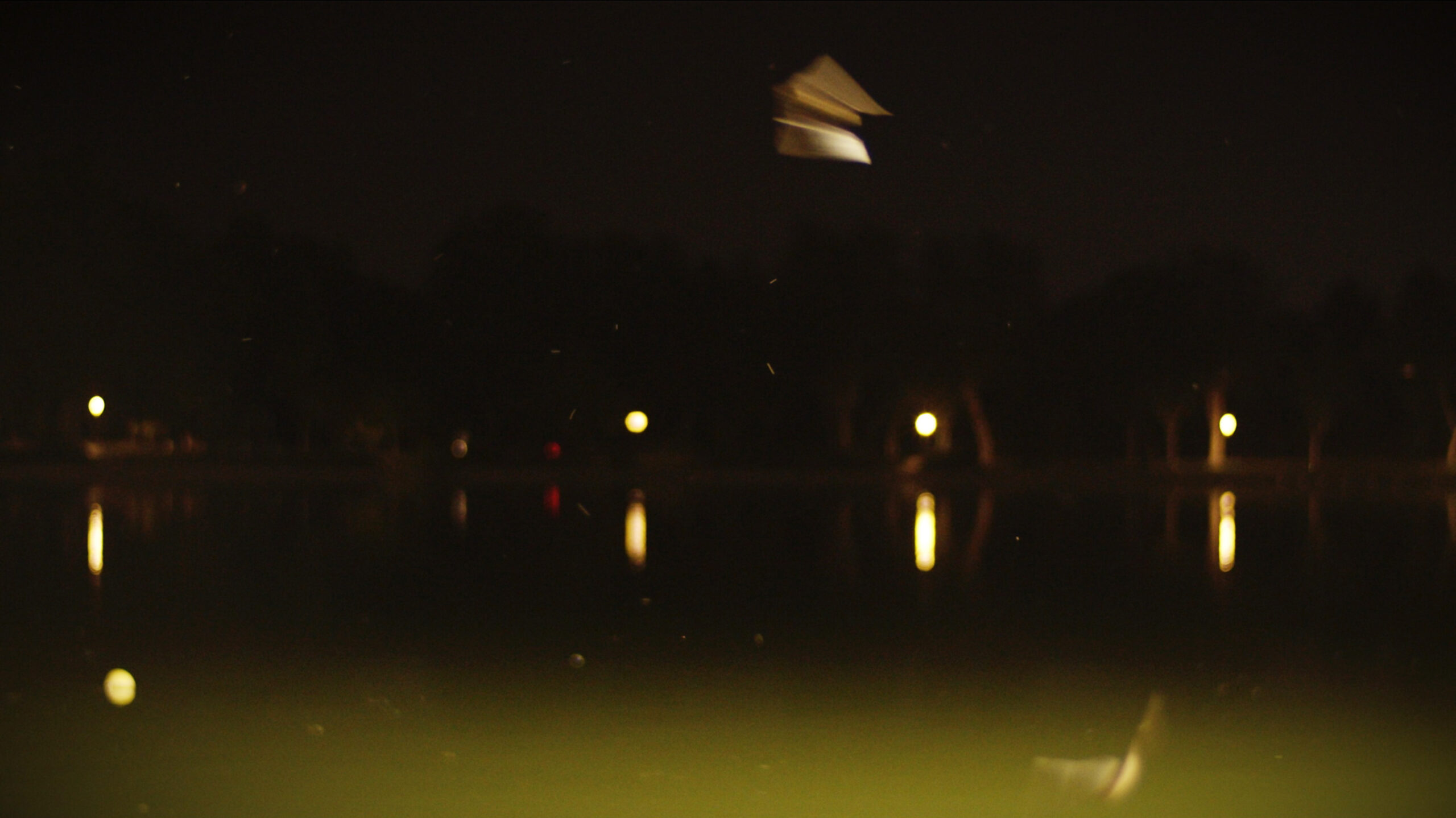Nika Son
CAE LA NOCHE
by Helena Wittmann & Nika Son
a performative Video-Sound-Installation
(2-channel Video / 6-channel Audio)
35′ min
La nuit tombe. Two projectors whir in the dark, their bright beams covered up. A masked crowd gathers and sits on the floor of a former bus station. Six speakers, tall and small, are scattered around us. Cicadas join in their daily celebration of sunset. Sound fills in social distances, caressing our skins. On the wall a fountain fades out of darkness. A female body lays behind it, her back turned to us. Taxis swirling around keep their night watch. She dissolves back into darkness, and so do I. Side-by-side, two screens probe the many shapes of nighttime. Bats waltz around out-of-focus street lights. My eye sinks into the concrete guts of the Chamartín metro station. In ghostly slow motion, human bodies merge into the multilayered architecture. For thirty minutes, Nika Son and Helena Wittmann suspend all coordinates of daylight vision. Eerie sonic compositions alienate landscapes while neon lightning flattens all shadows. No depth, no opacity, no distances. I experience a world of ultrasonic radiology.
What is it like to be a bat? This famous philosophical interrogation has come to reflect our inherent limitations to bridge the gap of knowledge and communication with other species. Yet, in pandemic wake, much remains to be learned from bats beyond our viral likenesses. For months, the whole world fell into slumber. Night swallowed up optical legibility and daytime certainties. Physical boundaries were blurred. But domestic invisibility also opened spaces of possibility for our ears. In Es Fällt die Nacht, Wittmann and Son take up bats’ challenge – to feel the night on our eardrums. It is techno dancers’ womb, nightshifters’ cave. Like bats, I listen to pulsing lightwaves and see-through walls. Like bats, I enjoy the rugged surfaces resounding in my stomach. Like bats, I trade sharpness and colorfulness for intimacy. (Jade de Cock)
